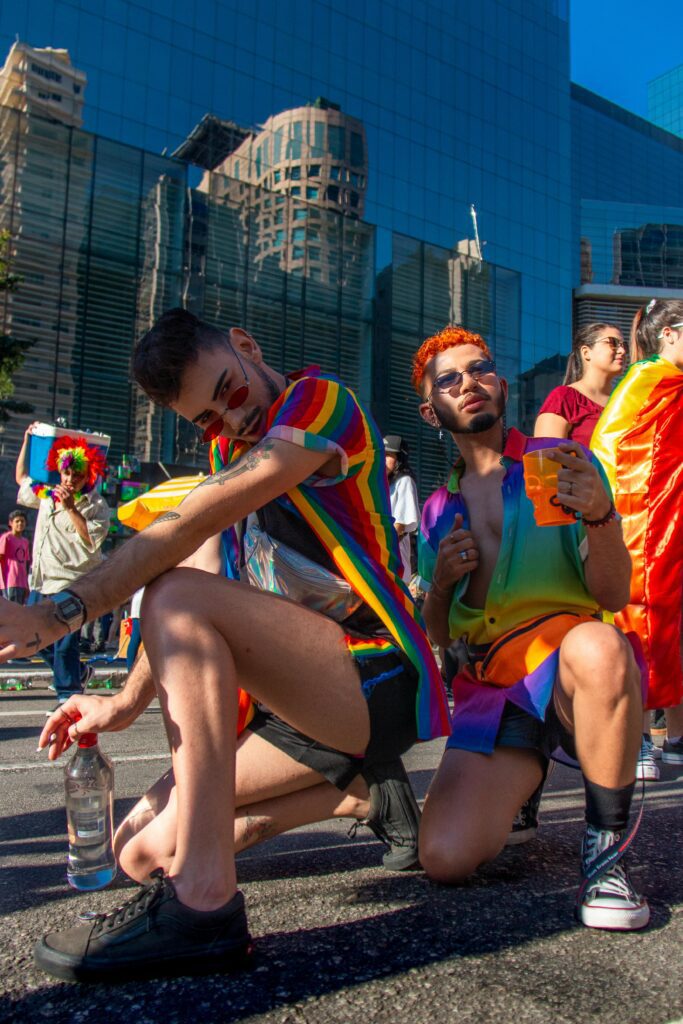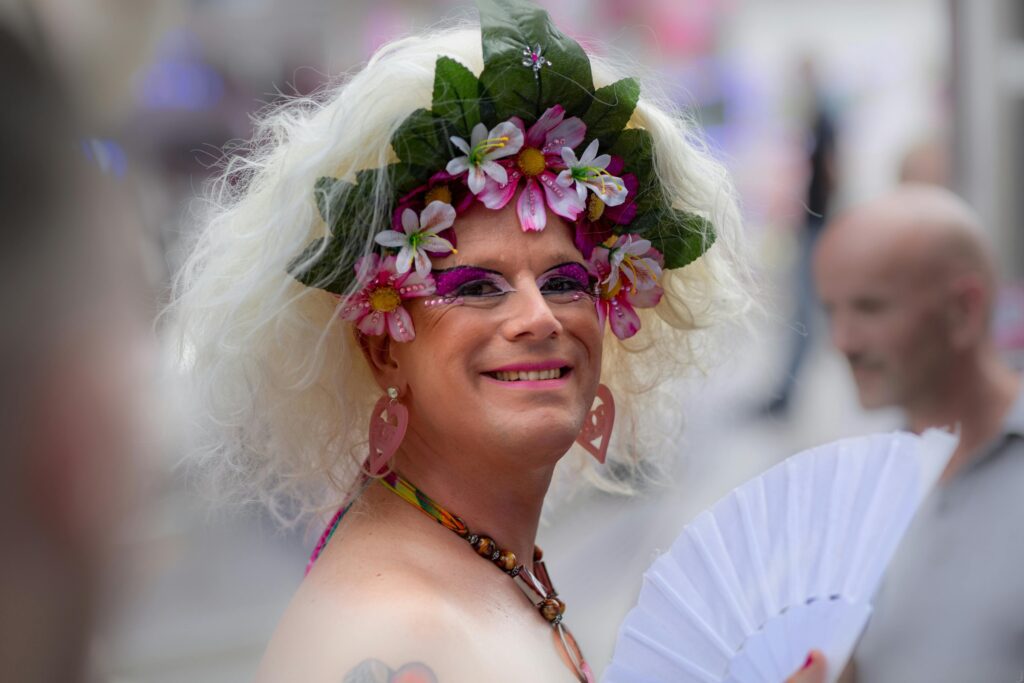Table of Contents

Introduction
Mental health is an issue that touches every individual, regardless of their background or identity. However, for young people who are lesbian, gay, bisexual, transgender, queer/questioning, or belong to other sexual or gender minorities (LGBTQ+), this issue holds a special significance. The tumultuous period of adolescence is fraught with complexities for anyone, but for LGBTQ+ youth, the journey is often laden with additional challenges such as stigma, discrimination, and social isolation. This blog post is dedicated to exploring the intricate tapestry of mental health issues faced by LGBTQ+ youth, examining the root causes of these challenges, and suggesting actionable steps to cultivate a more supportive and inclusive environment where they can flourish.
Unraveling the Unique Mental Health Challenges of LGBTQ+ Youth
To fully appreciate the gravity of the mental health issues faced by LGBTQ+ youth, it is essential to first understand the common mental health problems that disproportionately affect them. Studies have consistently highlighted that LGBTQ+ young people are over two times more likely to grapple with mental health challenges than their heterosexual and cisgender counterparts. These disparities are not innate to their identities but rather stem from external forces that shape their experiences.
Common Mental Health Issues
LGBTQ+ youth are particularly prone to anxiety and depression, with chronic stress emanating from the fear of societal rejection and the constant need to navigate a world that often does not affirm their identities. This stress can manifest in various ways, leading to anxiety disorders and depressive episodes.
Moreover, the Trevor Project, a leading organization focused on LGBTQ+ youth, has reported that a staggering 45% of these young individuals have seriously contemplated suicide within the past year. This is in stark contrast to the general youth population, where the rate is significantly lower. Another troubling aspect is the prevalence of post-traumatic stress disorder (PTSD) and trauma among LGBTQ+ youth, which can be traced back to their exposure to physical and emotional abuse, as well as social ostracism.
The Root Causes
Several contributing factors exacerbate the mental health struggles of LGBTQ+ youth. Stigma and societal discrimination are pervasive, casting a shadow of judgment and exclusion that can lead to feelings of alienation and isolation. The lack of acceptance from family members is another significant issue, with many LGBTQ+ youth facing the grim prospect of homelessness or estrangement. Bullying is a persistent and insidious challenge that LGBTQ+ youth face at alarming rates, which can have severe implications for their self-esteem, academic performance, and overall mental well-being.
The Nuanced Influence of Intersectionality
Intersectionality is a framework that acknowledges how different aspects of a person’s identity—such as race, gender, class, and sexual orientation—interact to form their experiences and the challenges they face. For LGBTQ+ youth, these intersections can significantly intensify the mental health issues they encounter.
Racial and Cultural Factors
LGBTQ+ youth of color are frequently subjected to a dual burden of discrimination, stemming from their racial or ethnic identity as well as their sexual or gender identity. The interplay of these two aspects can lead to a complex web of challenges, as cultural norms in certain communities may stigmatize LGBTQ+ identities. This compounded discrimination can result in increased mental health issues as these young individuals navigate their way through a world that is often less accepting of their intersectional identities.
Gender Identity Considerations
Transgender and nonbinary youth, in particular, face a distinct set of hurdles within the broader LGBTQ+ community. The struggle with gender dysphoria, the distress that occurs when one’s gender identity does not align with their assigned sex at birth, is a profound experience that requires specialized support and understanding. Additionally, these youth may encounter a lack of access to healthcare that is affirming of their identities, and they are at a higher risk of facing targeted violence and harassment.
Geographic Disparities
The mental health landscape for LGBTQ+ youth is also shaped by their geographic location. Young people living in rural areas or in more conservative regions might find themselves with limited access to supportive communities and resources. This can lead to a sense of isolation and a greater difficulty in finding mental health care that is both accessible and sensitive to their specific needs.


The Pivotal Role of Family Dynamics
The environment at home is a crucial factor in the mental health outcomes of LGBTQ+ youth. The way families respond to their children’s sexual orientation or gender identity can have a profound impact on their mental well-being.
The Consequences of Family Rejection
Unfortunately, many LGBTQ+ youth are met with rejection from their families, which can manifest in various forms, from verbal abuse to attempts to change their identity. Such rejection can have devastating effects, making these youth eight times more likely to attempt suicide and six times more likely to experience depression. The pain of not being accepted by those who are supposed to provide unconditional love can be overwhelming and have long-lasting repercussions on their mental health.
The Power of Family Support
Conversely, families that are accepting and supportive can serve as a bastion of strength for LGBTQ+ youth. Simple acts of love and affirmation, such as using the correct pronouns or attending LGBTQ+ events with their child, can foster resilience and improve mental health outcomes. Programs like the Family Acceptance Project offer invaluable resources to help families understand and embrace their LGBTQ+ children, thereby contributing to a more nurturing and loving home environment.
Bullying, Harassment, and the Quest for Safety in Educational Settings
Schools are the primary social institutions where young people spend the majority of their waking hours. For LGBTQ+ youth, these spaces can either be havens of learning and growth or grounds for fear and distress.
The Pervasiveness of Bullying
LGBTQ+ students are frequently targeted for bullying and harassment, with nearly 60% reporting feeling unsafe due to their sexual orientation. This bullying can take many forms, from verbal taunts to physical assaults, contributing to a toxic school climate that undermines their sense of security and belonging.
Impact on Mental Health
The constant fear of abuse can lead to significant mental health issues, such as lower academic achievement, increased school absenteeism, and a higher risk of developing depression. Moreover, the lack of safety can have a cascading effect, leading to further isolation and a diminished sense of self-worth.
Creating Inclusive Schools
To combat these issues, schools need to establish inclusive policies and practices that respect and protect the rights of LGBTQ+ students. This can involve creating safe spaces such as Gay-Straight Alliances (GSAs) and ensuring that teachers and staff are trained to address LGBTQ+ issues sensitively. Schools must also enforce anti-discrimination policies and cultivate a culture where diversity is celebrated rather than feared.


The Significance of Affirmative Mental Health Care
The road to mental health for LGBTQ+ youth is often fraught with barriers, particularly when it comes to accessing appropriate care.
Challenges in Seeking Help
Finding mental health services that are adequately trained in LGBTQ+-specific issues can be difficult. Moreover, financial constraints and the scarcity of local resources can prevent many from receiving the support they deserve.
The Benefits of Affirmative Therapy
Therapists who specialize in affirmative care are equipped to validate and support the identities of LGBTQ+ youth. They are attuned to the unique challenges these individuals face, such as the process of coming out, dealing with gender dysphoria, and confronting internalized stigma.
Exemplars of Affirmative Practice
Effective affirmative therapy involves using inclusive language, understanding the cultural nuances of LGBTQ+ experiences, and advocating for clients’ well-being within broader systems, including educational and medical settings. These practices can make a world of difference in the lives of LGBTQ+ youth by providing them with the validation and support they need to navigate their mental health journey.
The Catalytic Force of Community Support
Community support plays a vital role in bolstering the mental health of LGBTQ+ youth.
The Role of LGBTQ+ Community Groups
Organizations such as The Trevor Project, GLAAD, and local LGBTQ+ centers offer sanctuaries where young people can find solidarity and support. These groups provide essential resources, mentorship, and a sense of belonging that can be life-saving for those who may feel isolated.
Online Support Networks
In the digital age, online communities have emerged as critical spaces for LGBTQ+ youth, particularly those in less accepting environments. These platforms offer anonymity and accessibility, allowing young people to connect with peers and access information that can be pivotal to their well-being.
Peer Support and Allyship
Strong peer relationships can serve as a buffer against feelings of loneliness and isolation. Moreover, allies within schools, families, and communities can be instrumental in creating inclusive spaces and challenging discriminatory behaviors.
Working Toward Positive Change
To ensure a brighter future for LGBTQ+ youth, we must take deliberate steps to create a more accepting and equitable world.
Advocating for Inclusive Policies
Legislative changes are essential for providing LGBTQ+ youth with the protection they deserve. Policies must be enacted to ensure access to gender-affirming healthcare, inclusive education, and mental health resources that are tailored to their needs.
Promoting Education and Awareness
Community workshops, school programs, and media campaigns can play a significant role in reducing stigma and fostering understanding of LGBTQ+ issues. By highlighting positive role models within the community, we can instill resilience and hope in young people.
Encouraging Allyship
Allies, regardless of their own sexual orientation or gender identity, are vital in the quest for equality. By offering validation and support, they can significantly impact the mental health trajectory of LGBTQ+ youth.


Conclusion
The mental health challenges faced by LGBTQ+ youth are stark and multifaceted, stemming from societal structures that often fail to embrace diversity. It is imperative that we recognize the external forces that contribute to these disparities and work collectively to dismantle them. By fostering empathy, building robust support systems, and advocating for policy reforms, we can pave the way for a world where every LGBTQ+ young person feels seen, heard, and valued.
The journey toward mental health and well-being is ongoing, and the responsibility lies with all of us—families, educators, healthcare providers, and community members. Together, we can construct a society that celebrates the authenticity of LGBTQ+ youth and empowers them to live their best lives. Let us commit to this vision and strive for a future where every LGBTQ+ youth has the opportunity to thrive in an environment that cherishes their uniqueness.